Dave Marrs - Rebuilding Smarter With ICF - PODCAST TRANSCRIPT
June 2, 2025 at 1:00 p.m.Editor's note: The following is the transcript of a live interview with ave Marrs, co-host of HGTV’s Fixer to Fabulous. You can read the interview below or listen to the podcast.
Intro: Welcome to Roofing Road Trips, the podcast that takes you on a thrilling journey across the world of roofing. From fascinating interviews with roofing experts to on the road adventures, we'll uncover the stories, innovations and challenges that shape the rooftops over our heads. So fasten your seat belts and join us as we embark on this exciting roofing road trip.
Karen Edwards: Hello and welcome to another episode of Roofing Road Trips from RoofersCoffeeShop. My name is Karen Edwards and today's episode is going to be a little bit different from what you're used to hearing because we have a very special guest with us today and I am talking to Dave Marrs, Co-host of HGTV's popular show, Fixer to Fabulous. Dave, welcome to the podcast.
Dave Marrs: Thank you for having me. What a great morning to just be sitting and talking about, well, everything building, so I'm happy to do that.
Karen Edwards: You got it. Wow. So on your HGTV show, you are a restoration contractor. You have a home building business in Arkansas. I'd like to talk about some of the trends that you're seeing in building envelope construction. What are homeowners looking for? What do they care about?
Dave Marrs: Well, I mean, that has changed a lot really since COVID and I'm sure you're hearing this a lot, but we now live in a time where people, their houses become to us at least so much more important than it used to be, as far as a lot of people are working from home. A lot of people are finding, they're able to be in a location that they've always wanted to be in. So home construction for us at least, it's much more important than it used to be on having a well-built home that's not necessarily the biggest home out there, but it's in the location that customers want. It's got the features that those customers want. It's efficient, sustainable, it's a lot of different things that, when I started building here in Arkansas 20 years ago, weren't necessarily as important. But I love that I'm seeing that and I love how our building industry is just really changing so much every day with technology to answer a lot of those demands.
Karen Edwards: Yeah. And you said, wow, 20 years you've been building homes there in Arkansas. I'm sure you've seen a lot of changes. The house that was built 20 years ago is not the house that's being built today.
Dave Marrs: No, it's not even close. I started building in Colorado. My father was a log home builder in Colorado, so I've been around building all of my life. And almost what we used to do where there was a lot more focus on making use of every individual space and making these homes really as efficient as we could. That was how my business started when it was with my father. And then we went early 2000s where a lot of it was just building to flip and sell and building. Trying to get size, trying to get something that was an investment that was not something that you're going to stay in. Fast-forward to now, 20 years later in Arkansas, that's changed a lot, where people, they're very specific on their location, their needs. Because typically in this area, it's going to be something that they want to stay in a lot longer term.
Karen Edwards: Right. So you did mention sustainability and eco-friendly. How important is that really to homeowners? Are they asking about the types of products you're using?
Dave Marrs: Yeah. So, I think we can all agree that the internet has some really great things and some really bad things. One of the great things for homeowners, maybe not as much for builders, but for homeowners now, it seems like a lot of new builds are a lot more consumer driven and customer driven than they used to be. I think before we had access to all of the options. The sustainability that we can now achieve in a house, homeowners depended much more on the contractors to tell them what products to use, how to build the house, et cetera. Where, I mean, gosh, you look on YouTube or any podcast, there's so much resources.
There's so many resources out there to really show different and a lot of times better ways to build. And contractors, I'm guilty of this. Contractors hate change. We get in a groove, we get with what we know, what works and we like to stay with that. And so it's been really good that customers have been coming to Jenny and I and saying, "Hey, I've seen this. I've seen that. This is something that's new, that it gives me sustainability without sacrifice." And I think that's something, again, 10, 15, 20 years ago, a lot of times to be sustainable, it meant that you had to give something up and that's no longer the case.
Karen Edwards: Right, yeah. So I think that puts a lot of pressure on you because this consumer has done so much research. They may bring something to you that you have not dealt with before. So then you have to take that on.
Dave Marrs: All the time.
Karen Edwards: You have to learn about it.
Dave Marrs: It's an exciting time to be in building because of just what we're doing really with sustainability. And I think everyone out there, if they could make the choice of a product that is not significantly more expensive, that gives them better performance and also helps the environment. I can't think of many people that would make the choice not to do a more sustainable home. And so we now have products and we've had for a while, but they're becoming more mainstream products that give us all of those options. And so here in Arkansas, we've started building a lot more with ICF, so insulated concrete forms. It gives a homeowner several things, one of which is sustainability. You're getting a lot more insulated tight structure. If you think of a Yeti cooler, the way that it does so well is its continuous insulation around the whole cooler. And so basically ICF is the same principle. You're breaking that thermal gap, that thermal bridge that a typical, in our area, lumber construction allows heat transfer. Heat, which is energy, it's heating, it's in the winter, it's cooling in the summer.
It allows that transfer and makes the home less efficient. So efficiency is one big reason to use an insulated concrete form. Another in our area specifically is the weather that we're having here lately. Whether it's my in-laws live in Florida, so you've got hurricanes there. We are in the central part of the America where we're seeing so many more tornadoes and straight-line winds and hail and you name it, just a lot more severe weather. And then you go all the way to the West coast where you have fires. And so I think the nice thing about an ICF is, you're getting wind rating for hurricanes and straight-line winds and tornadoes. You are getting fire protection for something that's not combustible, that can't burn up like wood and you're getting safety for your family. Which if you are not interested in just building and flipping, like maybe we used to be a little bit more. If you're building that investment, well, it's a little bit more, but it's not significantly more. And it's building strength into really a lot of people's greatest asset.
Karen Edwards: Their home. And we have a lot of roofing contractors that listen to our podcast. So if you're wondering why in the world is Karen talking to this guy about building homes and insulated concrete forms? And I will say that Nudura insulated concrete forms is part of the Tremco Construction Products Group. And Tremco is huge in roofing, commercial roofing especially. But if you didn't know, Tremco Construction Products Groups has a lot of other construction solutions, one of them being the Nudura ICFs. So how did you discover Nudura, Dave?
Dave Marrs: Well, I've got a friend that works for Tremco, that has been telling me for years, "Hey Dave, you got to try ICF Construction. You've got to try it." And so I dabbled on a small scale. I did some foundations, I did some crawl spaces, not a lot. And then actually last year, it was Memorial Day last year. So a little bit over a year ago, we had nine tornadoes in one night in Northwest Arkansas here where I live. And it really devastated our community. Our family was, we were impacted by it and it was a wake-up call on... We have for years built safe rooms, little concrete safe rooms that you have to get up and run to in a serious weather event. And I got to researching them and just looking at what Tremco, what Nudura can offer as far as weather resistance.
And why not, if you have the option? If you're building new, why not build a safe house instead of a safe room? And so really it was the first house that I did was kind of a test to just see, "Hey, is this something that I can build in a timely manner? That I can tie together with the roof system?" Because like hurricanes, a lot of issues with tornadoes and serious wind happen when that roof rips off, when that air gets underneath the roof and it comes off and then the whole structure comes down. So this was just going with Tremco and Nudura, which I think traditionally has been seen more as a commercial product, to seeing if we could translate that to residential. And so as far as timeliness goes, we put the entire exterior structure of a 2000 square foot house up in a day and a half. I mean, it's like stacking Lego blocks.
Karen Edwards: What?
Dave Marrs: It's crazy because they're these eight foot long blocks, 18 inches tall. So once you get that first foundation row down, it goes really, really quickly. Just get your window door openings and then go up to where your trusses will attach to the roof. And after that, you're basically filling these forms with solid concrete and rebar. So now your connection point on attaching the roof to the structure is going from footing all the way through a concrete foundation and wrapping steel straps around the roof. So that gives you that wind rating. So I mean, the roof is part of the whole overall system. And then with sustainability, to try to really make this something that is energy efficient, that is as friendly as we can be to our environment, we went with a standing seam metal roof, so our waste was a lot less than it typically would've been with asphalt. Nothing wrong with asphalt, we use it all the time. But this was just an experiment to see, hey, what is the big difference in cost if we go these routes, if we go the environmentally friendly routes as much as we can?
Karen Edwards: Right. Concrete has got to be delivering one, you said a safe house instead of a safe room. What's that word?
Dave Marrs: Insulated walls?
Karen Edwards: Yeah. Yeah. I mean it's got to make the house a lot more energy efficient, right?
Dave Marrs: Oh my gosh. So you think about, basically I think it's two or two and a half inch rigid foam on both the exterior and the interior that make up the block. So you're getting right off the bat, I think I could be wrong on this, but right around an R-30 for your R-value on the exterior of the home. The other great thing for me as a builder was speed. So these forms, they have built in connection points every 12 inches. So once we put up the structure of the house, I was ready. I didn't need to use OSB on the side. I was ready to put siding right on the outside or rock, whatever exterior surface you had. On the inside, you take a router and you router out all your electrical, anything that you have to have in the exterior wall and then you're ready to Sheetrock. So there's no OSB on the exterior. There's no insulation that you have to do on the interior, so you're ready for an exterior finished facade as well as the interior drywall after just building that exterior block wall.
So it really sped up the whole process. And like you said, I have no thermal bridging because it's six inches of concrete with rigid foam on either side. I've got a better insulated house and I have one that can withstand a couple hundred miles an hour of wind. I have one that if I have a forest fire or the fires in California, this is a foam that is a fire retardant foam, that will not burn like lumber will. If it does get through that first layer of foam, well now all of a sudden I've got six inches of solid concrete around my house. So in a storm, instead of racing where you have seconds or maybe minutes at most to get into a safe room, my kids are now in a safe room. And so we tested this and I won't go back to building that traditional way. I guess as a builder now, this is something new I've learned and I'm resistant to change again.
Karen Edwards: Right. No and I imagine that you're saving time and so you're saving costs for the owner because it's not as much labor. There's no OSB, there's no extra insulation. Hard time with that word. Yeah, so it makes sense. And so those savings offset maybe some of the costs of using an ICF.
Dave Marrs: Exactly. And so I think that's the trade-off, your labor is much quicker. You don't have to use as many materials. There's so little waste because all... And the nice thing about an Nudura as well, all the forms, they can flip, they can go... So you don't have to buy a right corner and a left corner or all different pieces. It's all interchangeable, which it makes it really quick to install. They all come where they're collapsed, so my shipping was much less than a traditional lumber house where you're bringing in materials and materials and materials. This is one time and done. And yeah, I'm getting savings initially for me as a builder, but what I'm giving to my customers is long-term savings on energy, big long-term savings.
I'm giving them sound pollution is another big thing in cities or neighborhoods that these homes are so quiet. And then really, it enabled me to save a little bit of money to do a standing seam metal roof, which was more efficient and gives you that 50-year warranty, a lot better impact than some other roofs. And I mean, the greatest thing about all of this is I'm getting safety for the family. So we went ahead and we put in impact glass as well. We put in hurricane rated windows because we did save on labor, on OSB, on insulation. We saved on those things, so we spent it to also get that safety factor with flying debris in any kind of a severe weather event. So yeah-
Karen Edwards: Wow.
Dave Marrs: ... it turned out really cool. I can't speak enough good about it. And it's just like anything else out there. There is a learning curve. This is something that, it is like stacking Lego blocks. But that first course is vitally important. And I would always tell people, the manufacturer or the supplier that sold me the Nudura forms on the first house, I said, "Hey, I want to be a part of this and I want to learn how to do this, but I want to pay your crew to do it, so I know I'm doing it correctly." After they did it, I said, "Oh my gosh, this is something I could easily do."
Karen Edwards: Yeah, so those Legos, playing with Legos as a kid has really come in handy.
Dave Marrs: I know. Who knew it would pay off? It has.
Karen Edwards: Oh, wow. That's awesome. Okay, so I'm just curious if somebody's listening to this and maybe they are curious and want to consider giving ICFs a try, what's your advice?
Dave Marrs: So I think I would definitely advise that you try it. I think once you try it and learn the process, you won't go back to the way you used to build. The great thing about Nudura and I don't have any idea if other companies offer this, but Nudura, they do free online courses on exactly how to do it and the process with doing this. So I took about five or six hours worth of courses. It was a half of a day where I went through the whole process, from installation to finish out, to what you do with electrical if you're going to run pipes through, whatever. I went through all of that. I became Nudura certified to be able to install this. I still paid a professional that does it day in and day out to do the first job. But I think people are going to find what I found versus framing.
I spent about 10% more on the Nudura materials, but that savings, I've already paid myself back in what I saved in OSB, what I saved in installation, what I saved in time and in labor. And this is something that will continue to pay the homeowner for years. So I would encourage people, hey, give it a try. I mean, if you're building a spec home, I think it's a great way to sell a really good feature to a homeowner. As a builder or a roofer, whomever, the last thing that you want to do is have to go back and do a bunch of warranty work on a house. You want to sell their house and you want them to enjoy it and you want to move on to the next project. And just the opportunity for issues or failures or water protrusion or any of these things to happen, it gets cut down so much.
And to have a house, there's pictures of Nudura houses along a beach in Florida where every house was leveled and the one Nudura house is the one that is still standing and still fine through a hurricane. And I think that's a testament. I want to be that builder. I want to be the builder that, the first one I built I had neighbors that came to me and said, "Hey, who's this being built for?" And I said, "Oh, this is a model spec home because I'm figuring this process out." And they said, "Can we give you our number? And whoever you do end up selling it to, can this be the place we all come if there is a tornado?"
Karen Edwards: Oh wow.
Dave Marrs: And what a great feeling as a builder, that you're the destination house. And so I would say give it a try. If nothing else, when I first thought about it, I just went on to Nudura, talked to my buddy that worked there. I just clicked that I wanted information. They set me up with everything that I needed to give the city as far as engineering and specs because this was new for them as well. All the information I need. They were literally, Zach. I shouldn't probably be throwing Zach's name out, but Zach first for Nudura. And literally I probably called Zach a lot more than I should have, but always answers and was very helpful.
And I think whenever you're trying something new or any builder, any roofer out there, the suppliers you go with are the ones that give you service, the ones that answer the phone call when you need to talk to them about something and that was Nudura. So yeah, it's been a good experience and something that has really cut down my build times significantly and not really increased my cost. So when I said, when I started really, if we can get sustainability without sacrifice, why would we not do it?
Karen Edwards: Right. Yeah. So have you had feedback from the person who now lives in that first home?
Dave Marrs: Yeah, it's whisper quiet when you walk in there. It's great because you go in and before there was even heating and air in the home, it was 10 degrees cooler when you walked into this home. It's so much like the insulation factor or the sound factor, the comfort factor is worth so much in and of itself. My wife and I, we live in 125-year-old farmhouse. We've done a lot of renovations here, but those old houses, they were built to breathe. There's definitely air transfer back and forth and so I think if we ever do build a new one, then we'll definitely go Nudura.
Karen Edwards: Yeah. Well, you could build yourself a little mini shed or something in the backyard.
Dave Marrs: Yeah, exactly.
Karen Edwards: Your safe room out of ICFs. Wow. So curious, when you have a customer, a consumer reach out to you for a build, you mentioned earlier you're like, "I don't want to do it any other way. I want to use this ICFs." What's the reception been and how much time do you have to spend educating that consumer?
Dave Marrs: So I think some of the pushback with ICF is thinking that you can't do huge windows, you can't do arches. You can't do a lot of the design that some people want with their homes. And that's probably been my biggest pushback. Obviously cost. People want to know, "Hey, this initial investment is it going to pay me back?" And so I just refer people to some of the builds that Nudura has done. In my house, I put a 16-foot wide big slider door, so they're able to have big transoms, they're able to put big windows, they're able to really do any of those features that you can do on a traditional house.
If you're doing a stone or a masonry veneer, that attaches right to it. If you are looking for that level five finish on the Sheetrock inside, that's smooth as can be, it's so much easier because you're not dealing with lumber. It's natural. Lumber is natural and so there's movement, there's bows. It's harder to get those really nice finishes that people are wanting. And so any of the pushback that I have received from it has been pretty easily overcome with what they can offer.
Karen Edwards: Yeah, I think if you listening to this and you want to check it out, Nudura is N-U-D-U-R-A.com and just go on their website, you'll see Dave, he's got a couple videos out there demonstrating the product. It's super cool, very innovative. And if I build a house, I'm certainly going to ask about ICF Construction because it just sounds incredible. As I sit in my home office and I hear the lawn mowers buzzing over the neighbor's yards and I'm like, "It'd probably be a lot quieter."
Dave Marrs: We get used to that until you actually walk into one of these homes, then you think, "Oh my gosh, this is so difficult." But again, I know this is more roofing, this podcast, but I think it all has application with, again, sustainability and homeowner safety without adding a bunch of costs, so I think, again, anytime a roofer, a builder, a homeowner gets that option and can use that option, it makes sense to me to do it. The biggest pushback with builders and with homeowners is just lack of knowledge on it and just the fear of trying something new. But I'm here to tell you, I tried it and I was the same way. Once you try it, you'll be hooked.
Karen Edwards: Yeah. Yeah. So, wow. What can we expect all your new builds from now on, ICF?
Dave Marrs: Oh yeah. I mean and so with the show, we still do a lot of renovation work and stuff like that. So with that, you're probably not going to see it as much as you would with new construction. But if you're doing an addition on a home, it's very easy to add that. It's something that all architects can draw in and it's something that I would encourage you to try.
Karen Edwards: Good point. Yeah. I wasn't even thinking about that. So an addition and then that's your safe room.
Dave Marrs: Exactly. Exactly.
Karen Edwards: Yeah. I love it. I love it. Wow. Dave, this was a great conversation. I want to thank you so much for being here today.
Dave Marrs: Absolutely. Thank you for the time and have a wonderful day.
Karen Edwards: Yeah and thanks everybody out there for listening. As always, we encourage you to follow us on social media. Subscribe on your favorite podcast platform because we hope to see you on a future episode. See you next time. Bye.
Outro: If you've enjoyed the ride, don't forget to hit that subscribe button and join us on every roofing adventure. Make sure to visit Rooferscoffeeshop.com to learn more. Thanks for tuning in and we'll catch you on the next Roofing Road Trip.

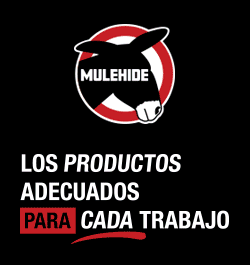





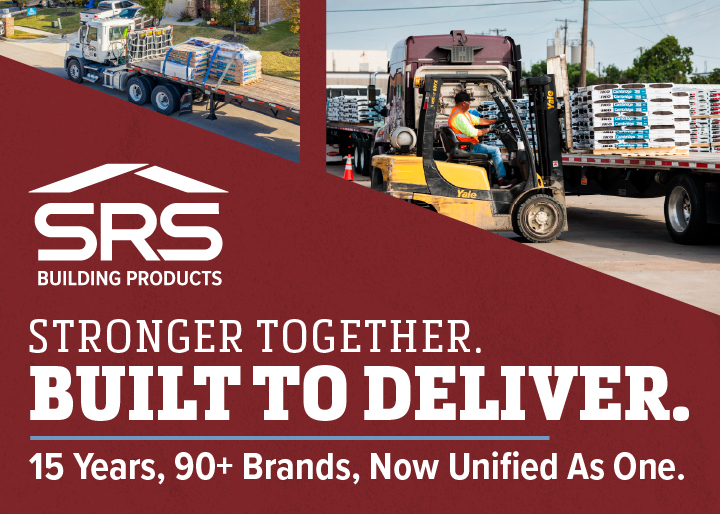
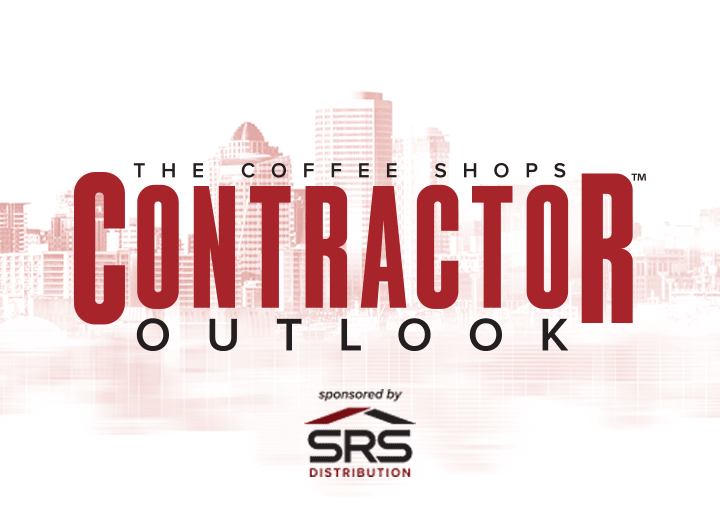
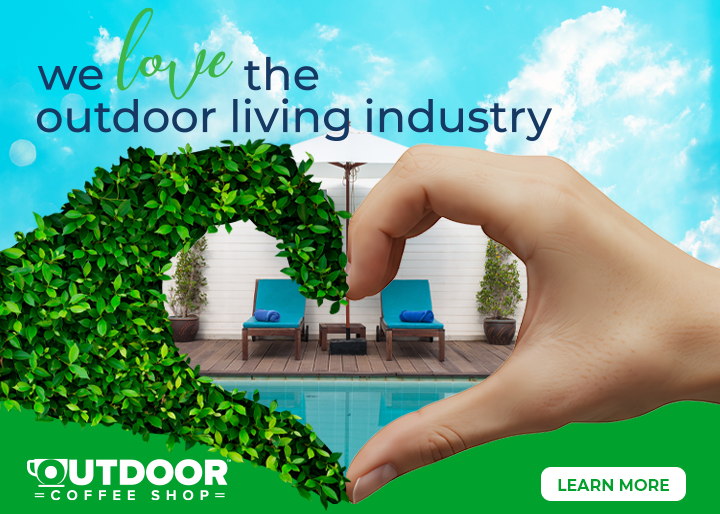
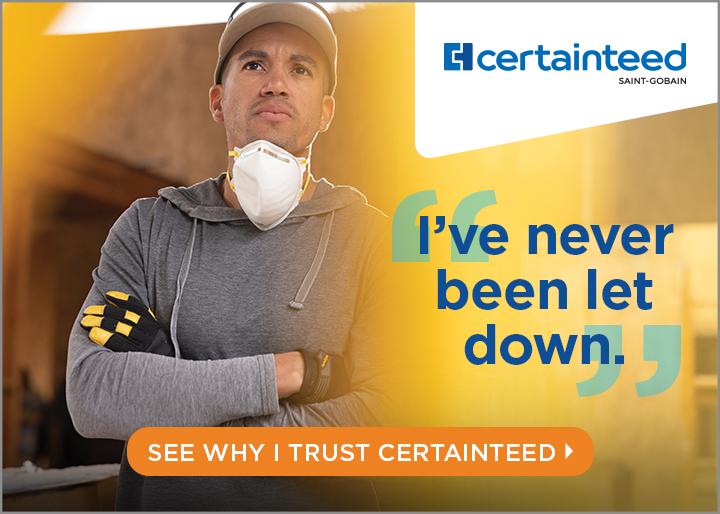




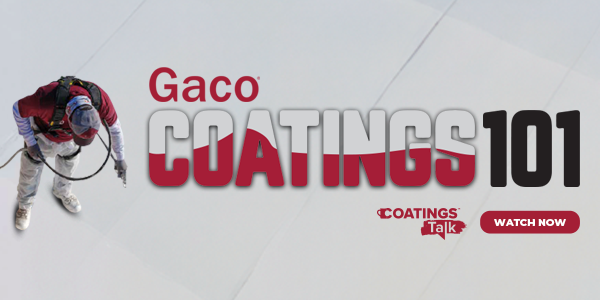
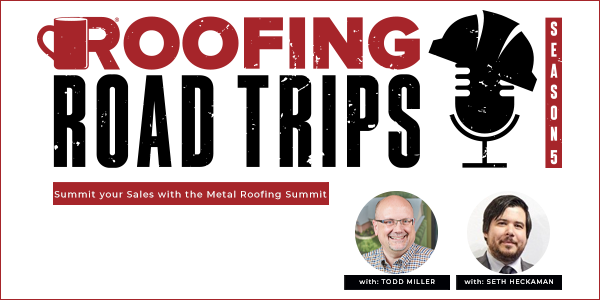

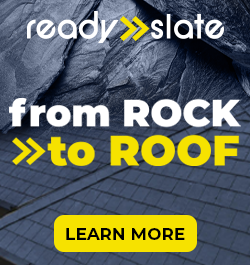
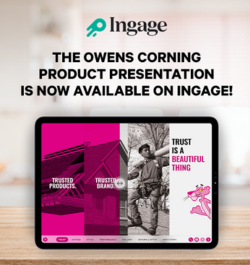
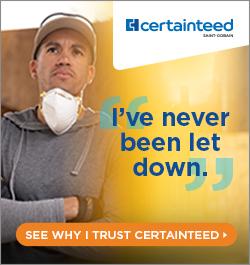


Comments
Leave a Reply
Have an account? Login to leave a comment!
Sign In